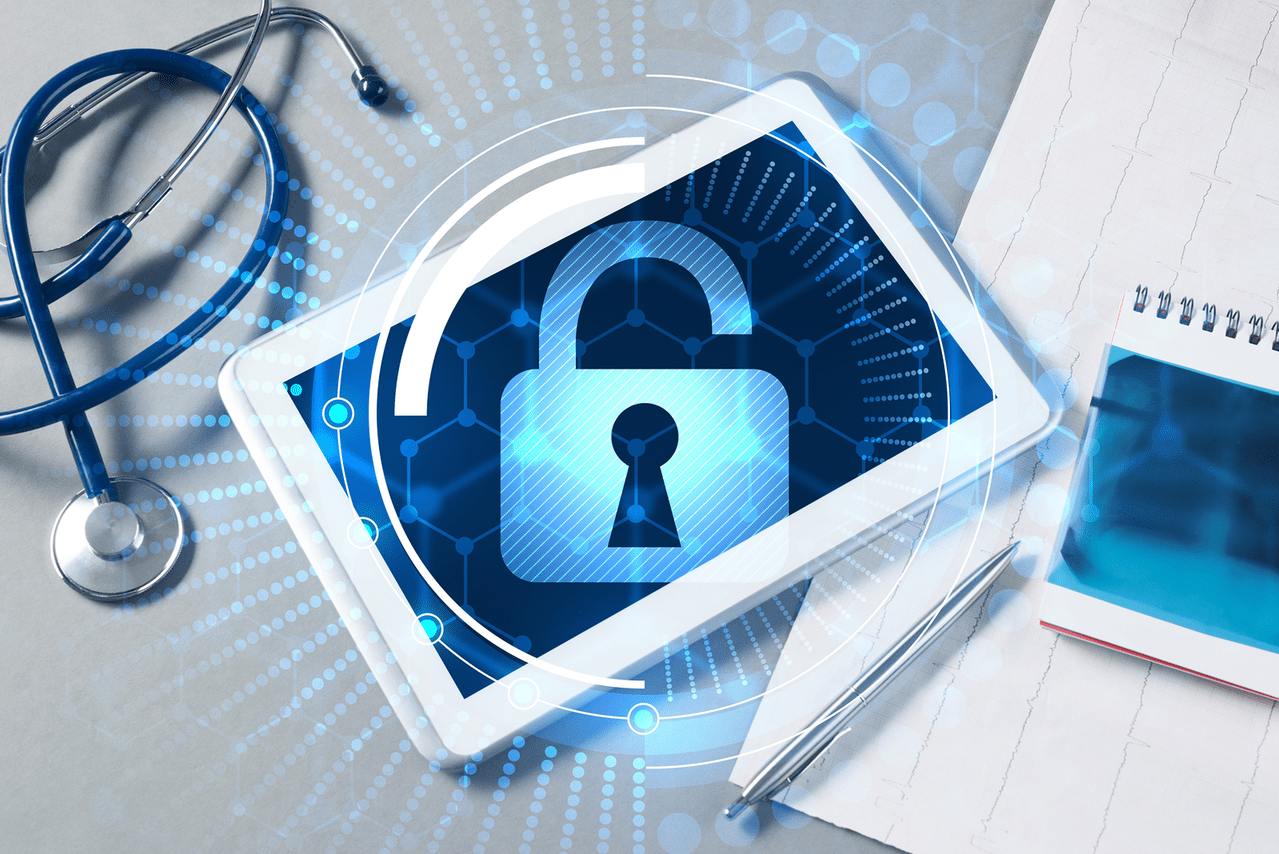Cybersecurity In Health Tech Can We Trust The Cloud?

Cybersecurity in Health Tech: Can We Trust the Cloud? This question looms large in an era where digital transformation is reshaping the healthcare landscape. As healthcare providers increasingly rely on cloud technology for data storage and management, concerns about cybersecurity become paramount. With patient data breaches making headlines, the intersection of health tech and cloud computing raises critical questions about data protection, privacy, and trust.
The significance of this discourse cannot be overstated; it is not merely about technology but about safeguarding the sensitive information of patients and preserving the integrity of healthcare systems. Understanding how cloud computing functions within healthcare, the threats it faces, and the regulatory frameworks that govern it is essential for navigating this complex environment.
Introduction to Cybersecurity in Health Tech

The health tech sector has rapidly evolved, significantly enhancing the quality and accessibility of medical care. However, this transformation has brought about critical concerns regarding cybersecurity. As health technology increasingly relies on digital platforms and cloud solutions, the safeguarding of sensitive patient information has become a top priority. Cybersecurity in health tech is not merely a technical issue; it is a fundamental aspect of maintaining the trust and safety of patients.
Cloud technology plays a pivotal role in the healthcare sector by providing scalable storage options, facilitating remote access to patient records, and promoting the interoperability of health systems. Essentially, cloud services enable healthcare organizations to streamline operations, improve care coordination, and offer enhanced patient experiences. Nevertheless, with these benefits come inherent risks, particularly regarding the security of sensitive health data stored in the cloud. Cyber threats, including ransomware attacks and data breaches, can compromise patient information, leading to devastating consequences for both healthcare providers and patients alike.
Impact of Data Breaches on Health Tech and Patient Trust
The ramifications of data breaches in health tech are profound, affecting not only the organizations involved but also patient trust and the overall integrity of the healthcare system. When a data breach occurs, it can lead to unauthorized access to sensitive patient information, including medical histories, social security numbers, and financial data. This loss of privacy can deter patients from seeking medical help or sharing important health information.
The following are significant impacts associated with data breaches in health tech:
- Financial Consequences: The financial repercussions for healthcare organizations can be staggering. Breaches can result in hefty fines, legal fees, and the costs associated with data recovery and upgrading security measures. For instance, the 2015 Anthem data breach cost the company over $100 million in settlements and security enhancements.
- Loss of Patient Trust: Trust is essential in the healthcare relationship. When patients learn that their information has been compromised, they may feel vulnerable and less inclined to share personal health details with providers. This erosion of trust can result in lower patient engagement and adherence to treatment plans.
- Operational Disruption: Data breaches often lead to interruptions in healthcare services, impacting the delivery of care. Healthcare providers may need to divert resources to address the breach, which can disrupt routine operations and delay patient care.
“In the age of digital health, maintaining robust cybersecurity measures is crucial to protecting patient data and preserving trust.”
The importance of robust cybersecurity measures in health tech cannot be overstated. As the industry continues to embrace cloud technology, ensuring the security of sensitive health data will be vital for fostering patient confidence and promoting the safe use of innovative health solutions.
Understanding Cloud Computing in Healthcare
Cloud computing has revolutionized the way healthcare organizations manage and share data. By leveraging cloud technology, healthcare providers can streamline operations, enhance patient care, and improve collaboration among medical professionals. The integration of cloud computing into health tech applications has not only transformed data storage and management but also introduced new functionalities that empower healthcare delivery.
Cloud computing enables healthcare providers to access, store, and share vast amounts of data seamlessly. This technology encompasses various functionalities, including electronic health records (EHRs), telemedicine platforms, and patient engagement applications. By utilizing cloud solutions, healthcare organizations can benefit from real-time data access, ensuring that medical professionals have the most up-to-date information at their fingertips. Furthermore, the scalability of cloud services allows healthcare providers to efficiently manage fluctuating data demands, especially during critical situations such as pandemics.
Advantages of Using Cloud Technology for Healthcare Providers
Implementing cloud technology in healthcare offers numerous benefits that can enhance the efficiency and effectiveness of patient care. These advantages include:
- Cost Efficiency: Cloud computing eliminates the need for extensive on-premises hardware and reduces IT maintenance costs. Healthcare organizations can opt for subscription-based services that align with their budgets.
- Data Accessibility: Cloud solutions offer secure access to patient data from any location with internet connectivity. This feature facilitates remote consultations and telehealth services, improving patient outcomes.
- Scalability: As healthcare needs evolve, cloud services can be easily scaled up or down to accommodate changing data storage requirements without significant upfront investments.
- Enhanced Collaboration: Cloud platforms foster collaboration between healthcare providers, allowing for seamless sharing of patient information and coordination of care among different specialists.
- Improved Data Security: Reputable cloud service providers implement advanced security measures, including encryption and regular backups, to safeguard sensitive patient data against breaches.
The contrast between traditional data storage solutions and cloud-based alternatives highlights the innovation brought about by cloud computing. Traditional systems often rely on physical servers located on-site, leading to limitations in accessibility and scalability. In contrast, cloud-based solutions offer a centralized platform where data can be accessed and managed more efficiently.
Comparison of Traditional Data Storage Solutions with Cloud-Based Alternatives
When evaluating data storage solutions, several key differences emerge:
| Feature | Traditional Data Storage | Cloud-Based Storage |
|---|---|---|
| Accessibility | Limited to on-premises access | Accessible from any device with internet |
| Scalability | Challenging and costly to expand | Easily scalable based on demand |
| Cost | High initial investment for infrastructure | Pay-as-you-go pricing models |
| Maintenance | Requires in-house IT support | Managed by cloud service providers |
| Data Recovery | Risk of data loss in case of hardware failure | Automatic backups and disaster recovery options |
By understanding these distinctions, healthcare providers can make informed decisions about adopting cloud technologies that better serve their operational needs and enhance patient care.
Current Cybersecurity Threats in Health Tech
The health tech industry is currently facing multiple cybersecurity threats that challenge the integrity and confidentiality of sensitive patient information. With the increasing adoption of digital solutions in healthcare, cybercriminals are keenly targeting this sector. The implications of these threats are significant, affecting not just healthcare providers but also patients and the overall healthcare system.
Recent statistics indicate a troubling rise in data breaches within the health tech industry. According to the HIPAA Journal, there were over 700 reported healthcare data breaches in the U.S. just in 2021, affecting more than 45 million individuals. This represents an alarming increase in cyber incidents compared to previous years. These breaches often expose sensitive information, leading to identity theft and violating patient confidentiality.
Types of Cyber Threats in Health Tech
Health tech companies face a variety of cyber threats that can compromise their systems and patient data. Understanding these threats is crucial for implementing effective cybersecurity measures. The following are some of the most common types of cyber threats:
- Ransomware Attacks: These malicious attacks encrypt a healthcare provider’s data, rendering it inaccessible until a ransom is paid. A notable example is the ransomware attack on the Colonial Pipeline in 2021, which, while not directly health-related, showcased the broader implications of ransomware on critical infrastructure.
- Phishing Attacks: Cybercriminals often use deceptive emails to trick healthcare employees into revealing sensitive information or clicking on harmful links. A report by Proofpoint indicated that 88% of organizations worldwide experienced a phishing attack in 2021.
- Data Breaches: Unauthorized access to systems can lead to significant data breaches, exposing patient records and other sensitive information. The healthcare sector is particularly vulnerable due to the value of personal health information on the black market.
- Insider Threats: Employees with access to sensitive data can intentionally or unintentionally compromise security, either through negligence or malicious intent.
Implications of Ransomware Attacks on Healthcare Systems
Ransomware attacks pose severe implications for healthcare systems, affecting not only operational efficiency but also patient safety. When critical systems are locked down, healthcare providers may experience delays in patient care, which could lead to adverse outcomes. The 2020 attack on Universal Health Services is a case in point, where the incident caused significant disruption across hundreds of facilities, impacting patient services and leading to a loss of revenue.
Moreover, ransomware attacks often result in the loss of sensitive data, which can further jeopardize patient privacy and trust in healthcare providers. The financial repercussions can be substantial, with costs associated with recovery, potential regulatory fines, and reputational damage often reaching millions of dollars. A report by Cybersecurity Ventures projected that ransomware damage costs are expected to reach $20 billion by 2021, illustrating the urgent need for improved cybersecurity measures in the health tech industry.
“The healthcare sector is a prime target for cybercriminals due to the sensitive nature of the data it handles and the critical services it provides.”
Regulatory Framework and Compliance
The regulatory landscape for cybersecurity in health tech is crucial in safeguarding patient data and ensuring that healthcare organizations uphold the highest standards of information security. Regulations such as the Health Insurance Portability and Accountability Act (HIPAA) play a significant role in defining how health data must be protected, particularly when it is stored or processed in the cloud. This section explores the requirements that cloud service providers must meet for compliance in the healthcare sector, as well as a comparative look at international regulations that influence the use of cloud technologies in healthcare.
Role of HIPAA in Protecting Health Data
HIPAA establishes a framework for protecting sensitive patient information, particularly through its Privacy and Security Rules. These rules stipulate how health data should be handled, including requirements for safeguarding electronic protected health information (ePHI). Healthcare providers, health plans, and business associates must adhere to these regulations to ensure they implement appropriate administrative, physical, and technical safeguards.
“Compliance with HIPAA is not just about avoiding fines; it’s about ensuring patient trust and safeguarding sensitive information.”
The HIPAA Security Rule specifically mandates entities to:
- Conduct a risk analysis to identify vulnerabilities and threats to ePHI.
- Implement security measures to mitigate identified risks.
- Ensure that all business associates comply with HIPAA regulations, especially those providing cloud services.
- Regularly review and update security policies and procedures as needed.
Requirements for Cloud Service Providers in Health Tech Compliance
Cloud service providers (CSPs) catering to the healthcare sector must meet stringent compliance requirements to protect ePHI. These requirements include ensuring that all data stored in the cloud is encrypted, both at rest and in transit. Additionally, CSPs must facilitate access controls to limit data access to authorized personnel only.
“Choosing a HIPAA-compliant cloud provider is essential for ensuring that health data remains secure and compliant with federal regulations.”
Key compliance requirements for cloud service providers include:
- Signing Business Associate Agreements (BAAs) with healthcare organizations.
- Implementing stringent access control mechanisms.
- Providing incident response plans to address potential data breaches.
- Undergoing regular security audits and assessments.
International Cybersecurity Regulations Impacting Cloud Usage in Healthcare
As healthcare becomes increasingly global, various international regulations also impact how cloud technologies are used in the sector. The General Data Protection Regulation (GDPR) in the European Union imposes strict rules on data protection and privacy, affecting any healthcare entity that processes the personal data of EU citizens.
“Regulations like GDPR demonstrate the importance of data protection on a global scale, affecting how healthcare organizations operate internationally.”
Key aspects of GDPR that influence cloud usage in healthcare include:
- Data minimization – only collecting data that is necessary for specific purposes.
- Right to access – individuals can request access to their personal data and understand how it is being used.
- Mandatory data breach notification – organizations must notify authorities and affected individuals within 72 hours of a breach.
- Cross-border data transfer regulations – stringent rules govern how personal data can be transferred outside the EU.
Best Practices for Cloud Security in Health Tech

In the ever-evolving landscape of health technology, safeguarding sensitive patient information is paramount. As health tech companies increasingly turn to cloud services for their operations, establishing robust cybersecurity measures becomes essential. This section Artikels critical best practices tailored for the unique needs of health tech firms utilizing cloud-based solutions.
Implementing effective cybersecurity strategies starts with understanding the various risks associated with cloud computing. Below are essential measures that health tech companies should adopt to fortify their cloud security architecture.
Essential Cybersecurity Measures for Health Tech Companies, Cybersecurity in Health Tech: Can We Trust the Cloud?
Given the sensitive nature of health data, adopting strong cybersecurity measures is not just recommended; it is a necessity. These measures help to protect patient information and comply with regulatory standards. The following list highlights key practices health tech companies should employ:
- Data Encryption: Encrypt sensitive data both in transit and at rest to prevent unauthorized access. This ensures that even if data is intercepted, it remains unreadable without the proper decryption keys.
- Access Control: Implement strict access controls to limit who can access sensitive information. Role-based access control (RBAC) can ensure that employees only have access to data necessary for their roles.
- Regular Security Audits: Conduct frequent security audits to identify vulnerabilities within the cloud infrastructure. These assessments help organizations stay ahead of potential threats and comply with industry regulations.
- Multi-Factor Authentication (MFA): Adopt MFA to add an additional layer of security. This requires users to provide two or more verification factors to gain access, making unauthorized access significantly harder.
- Incident Response Plan: Develop and maintain an incident response plan to address potential security breaches quickly. This plan should Artikel the steps to take in the event of a data breach, including communication strategies and recovery measures.
Importance of Employee Training and Awareness Programs
Human error remains one of the leading causes of data breaches in health tech. Therefore, fostering a culture of cybersecurity awareness among employees is crucial. Continuous training programs ensure that staff members understand the importance of cybersecurity and are equipped with the skills to recognize threats.
Regularly scheduled training sessions can cover various topics, including phishing attacks, password security, and safe data handling practices. By creating an environment where employees are educated about potential risks, companies can significantly reduce the likelihood of breaches caused by negligence.
“A well-informed employee is the first line of defense against cyber threats.”
Successful Cybersecurity Implementations in Health Tech
Several health tech companies have successfully implemented robust cybersecurity measures that serve as exemplary models for the industry. One notable example is a leading telehealth provider that adopted end-to-end encryption for all communications. This approach ensured that sensitive patient data shared during virtual consultations remained secure, gaining trust from users.
Another instance is a healthcare organization that integrated AI-driven threat detection systems into its cloud environment. This proactive measure allowed for real-time monitoring and quick responses to potential threats, significantly reducing the risk of data breaches.
By learning from these successful implementations, other health tech companies can develop tailored strategies that enhance their cybersecurity posture while meeting regulatory requirements.
Assessing Trust in Cloud Providers
In the healthcare sector, selecting a cloud service provider is a critical decision that directly impacts data security, compliance, and patient trust. The evaluation of potential partners goes beyond mere service offerings; it encompasses a thorough assessment of security measures and practices. Ensuring that cloud providers adhere to industry standards and regulations is essential for healthcare organizations to safeguard sensitive information and maintain operational integrity.
Evaluating the security of cloud service providers requires a diverse set of criteria that can help healthcare organizations make informed choices. Security features, compliance certifications, data management practices, and incident response capabilities are pivotal in this assessment. By using a structured approach, organizations can effectively vet potential cloud partners.
Criteria for Evaluating Security of Cloud Service Providers
When assessing potential cloud providers, healthcare organizations should consider the following criteria:
- Compliance with Regulations: Ensure that the provider complies with healthcare-specific regulations such as HIPAA, GDPR, and HITECH. This compliance demonstrates a commitment to protecting patient data.
- Data Encryption: Evaluate whether the provider employs strong encryption protocols for data at rest and in transit, safeguarding sensitive information from unauthorized access.
- Access Controls: Examine the provider’s access control mechanisms, including user authentication methods and role-based access policies, to limit data exposure to only authorized personnel.
- Incident Response Plan: Confirm that the provider has a robust incident response strategy in place to handle potential security breaches effectively and notify affected parties in a timely manner.
- Data Backup and Recovery: Assess the provider’s data backup solutions and disaster recovery plans to ensure that patient data can be restored in case of loss or corruption.
Checklist for Vetting Potential Cloud Partners
Healthcare organizations can utilize a checklist to systematically evaluate cloud service providers. This checklist will help simplify the vetting process and ensure comprehensive scrutiny.
- Review Compliance Certifications: Check for certifications such as ISO 27001, SOC 2 Type II, and other relevant industry standards that ensure the provider’s commitment to security.
- Request Security Audits: Ask for reports from third-party security audits to assess the provider’s security posture and historical performance in protecting client data.
- Assess Data Ownership Policies: Clarify who owns the data stored in the cloud and understand the terms of data retrieval upon contract termination.
- Evaluate Third-party Assessments: Consider if the provider has undergone external assessments and reviews from recognized security bodies.
- Engage in Security Training: Ensure that the provider offers regular security training for its employees to minimize human errors that could lead to data breaches.
Comparison of Security Features of Major Cloud Providers in Health Tech
The landscape of cloud service providers is vast, and understanding the security features of major players can guide healthcare organizations in their decision-making process.
| Cloud Provider | Compliance | Encryption | Access Controls | Backup Solutions |
|---|---|---|---|---|
| Amazon Web Services (AWS) | HIPAA, GDPR | Data encrypted at rest and in transit | Multi-factor authentication, IAM roles | Automated backups and recovery solutions |
| Microsoft Azure | HIPAA, ISO 27001 | Encryption options for data at rest and in transit | Granular access controls with Azure Active Directory | Site recovery options and geo-redundancy |
| Google Cloud Platform (GCP) | HIPAA, GDPR | Encryption by default for data at rest and in transit | Identity and Access Management (IAM) policies | Backup and restore solutions embedded in services |
By leveraging this comparative analysis, healthcare organizations can better align their needs with the strengths of various cloud providers, making a choice that prioritizes security and compliance.
Future Trends and Innovations in Cybersecurity
As health technology continues to evolve, so too does the landscape of cybersecurity. The integration of advanced technologies is paramount for enhancing the protection of sensitive health data. This section explores emerging technologies, the impact of artificial intelligence, and the anticipated evolution of cloud security measures in the healthcare sector.
Emerging Technologies Enhancing Cybersecurity in Health Tech
The healthcare industry is witnessing the introduction of several innovative technologies aimed at bolstering cybersecurity. These technologies include:
- Blockchain: Utilized for its decentralized nature, blockchain enhances transparency and security in health data management. By allowing secure sharing of health records without a single point of failure, it significantly reduces chances of data breaches.
- IoT Security Solutions: With the rise of Internet of Things (IoT) devices in healthcare, specialized security measures are becoming essential. Technologies such as device authentication and encrypted data transmission are critical to securing these interconnected devices.
- Zero Trust Architecture: This security model operates under the principle of “never trust, always verify,” ensuring that every access request is thoroughly vetted, regardless of its origin within or outside the network.
Impact of Artificial Intelligence on Health Data Protection
Artificial Intelligence (AI) is significantly transforming how health data is protected. By leveraging machine learning algorithms, AI can analyze vast amounts of data to detect anomalies that indicate potential cybersecurity threats. Key benefits include:
- Real-time Threat Detection: AI systems can monitor networks continuously, identifying unusual patterns that could signify a breach before it escalates into a crisis.
- Automated Response: AI can automate responses to common threats, minimizing the time it takes to neutralize risks and reducing the burden on human cybersecurity teams.
- Enhanced Predictive Analysis: By analyzing historical data, AI can predict future vulnerabilities, allowing healthcare organizations to proactively enhance their security posture.
Predictions for Evolution of Cloud Security Measures in Healthcare
As cloud computing becomes an integral part of healthcare infrastructure, the evolution of cloud security measures is anticipated to take several key directions:
- Increased Use of Multi-Factor Authentication: As cyber threats become more sophisticated, the implementation of multi-factor authentication will become a standard practice to enhance user verification processes.
- Advanced Data Encryption: Future cloud solutions will likely employ more robust encryption methods, safeguarding data both at rest and in transit, which can significantly mitigate risks associated with data interception.
- Regulatory Compliance Automation: Automation tools will aid healthcare organizations in maintaining compliance with evolving regulations, reducing the manual workload and potential for errors in compliance reporting.
- Integration of AI-Based Security Protocols: The adoption of AI in cloud security will likely lead to the development of intelligent security protocols that adapt and evolve in response to emerging threats.
Case Studies and Real-World Applications: Cybersecurity In Health Tech: Can We Trust The Cloud?
In the rapidly evolving landscape of health technology, cybersecurity has become a focal point, especially with the increasing reliance on cloud computing. The intersection of health tech and cybersecurity is marked by both challenges and innovative solutions. This section delves into case studies that highlight successful cybersecurity strategies while also reflecting on the lessons learned from notable data breaches within the healthcare sector. Furthermore, we explore how cloud security enhancements have revolutionized certain health tech companies.
Successful Cybersecurity Strategies in Health Tech
One of the standout examples of effective cybersecurity strategies in health tech is the case of a prominent health data management company that implemented a multi-layered security framework. This framework included advanced encryption technologies, regular penetration testing, and comprehensive employee training programs focused on cybersecurity awareness.
The adoption of these strategies led to a 75% reduction in reported security incidents over a three-year period. By prioritizing a proactive security posture, this health tech company not only protected sensitive patient data but also instilled trust among its users.
Lessons Learned from High-Profile Data Breaches
High-profile data breaches in the healthcare sector serve as stark reminders of the vulnerabilities present in health tech systems. For instance, the 2015 data breach of a major healthcare provider exposed the personal information of over 78 million individuals. The breach occurred due to inadequate access controls and outdated encryption methods.
In the wake of this incident, the provider overhauled its cybersecurity measures, focusing on improving data encryption standards and enhancing user authentication processes. Key lessons learned include the necessity of regular security audits, the importance of up-to-date software, and the effectiveness of a culture of security awareness among employees.
Transformations Through Cloud Security in Health Tech Companies
Cloud security has catalyzed significant transformations in various health tech companies. A noteworthy example is a digital health startup that transitioned to a cloud-based infrastructure, leveraging advanced security protocols offered by cloud service providers. The shift not only improved data accessibility for healthcare professionals but also fortified their security framework.
By utilizing cloud-native security tools, such as automated threat detection and response capabilities, the startup experienced a marked decline in vulnerabilities. Their incident response time decreased by 60%, showcasing how cloud security can enhance operational efficiency while protecting sensitive health data.
“Cloud security is not just about safeguarding data; it’s about enabling innovation in healthcare delivery.”
Final Review
In conclusion, navigating the landscape of cybersecurity in health tech requires vigilance and informed decision-making. As we have explored, the trustworthiness of cloud solutions hinges on robust security measures, regulatory compliance, and a proactive approach to emerging threats. By adopting best practices and critically assessing cloud service providers, healthcare organizations can enhance their resilience against cyber threats and ensure that patient trust remains intact in the digital age.
Clarifying Questions
What are the main cybersecurity threats in health tech?
Common threats include ransomware attacks, phishing, and data breaches, which can compromise sensitive patient information.
How can healthcare organizations improve cloud security?
They can implement strict access controls, regularly train employees on cybersecurity, and ensure compliance with regulations like HIPAA.
What role do regulations play in health tech cybersecurity?
Regulations establish guidelines for data protection and privacy, ensuring that healthcare organizations maintain the security of patient information.
Are all cloud providers equally secure?
No, not all cloud providers offer the same level of security. It’s important for healthcare organizations to evaluate providers based on their security features and compliance with regulations.
What emerging technologies are enhancing cybersecurity in health tech?
Technologies like artificial intelligence and machine learning are being utilized to detect threats and improve security protocols in health care data protection.






